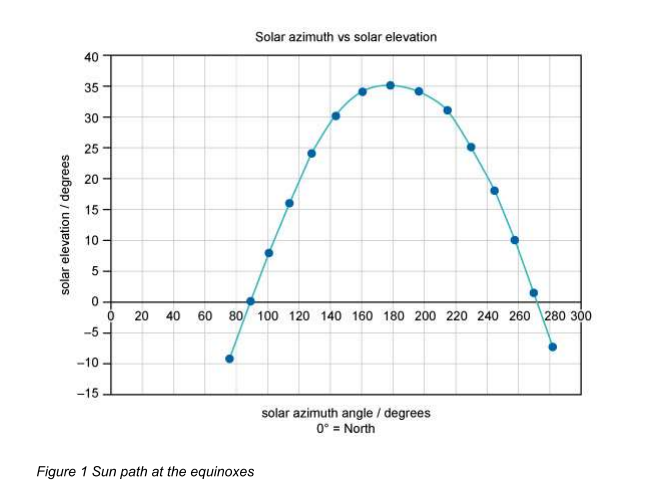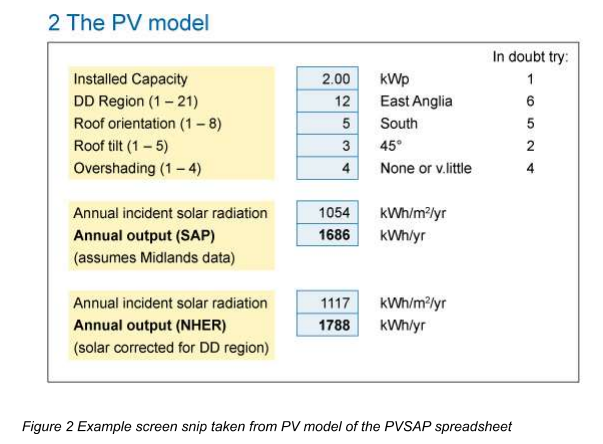- Care Safeguiding Children Assignment | Oxford Brookes University
- PSY4011 Developmental Psychology Assessment Brief | Arden University
- QSP7PCM Professional Cost Management Assignment 2 September 2025 | UCEM
- EGR2006M Control Systems Assignment 1 Brief | University of Lincoln
- MBA7066 Innovation and Entreprenuership Assignment Portfolio 2025 | UGM
- Contract Law Assessment 2 Problem Scenario 2025-26 | University Of Salford
- Operations & Supply Chain Management Assignment Brief : E-Commerce Supply Chain Efficiency
- Unit 1 Programming Assignment 2025-26 | ESOFT Metro Campus
- K/651/4745 Unit 1 Teaching My Subject Written Assignment | Britannia Education Group
- H/650/1099 Level 4 Academic Writing and Research Skills Assignment Brief | LSBU
- ASB-4012 Codding for Business Application Assignment – Project in R | Bangor University
- Unit: Team Management in Health and Social Care OTHM Level 5 Diploma Assignment
- BTEC Level 3 Unit 4 Programming Assignment – Concepts of Programming
- HSO4004 Principles of Care Assignment-1 and Assignment-2 Semester-1 September 2025-26
- 1031ENG-N Civil Engineering Construction Technology In-Course Assessment (ICA) Group Report | Teesside University (TU)
- MOD009382 Finance and Governance in Health and Social Care 011 Assessment Coursework Report | Anglia Ruskin University
- Geotechnical Engineering Assignment 2025/26 – University Of Surrey (UniS)
- Essentials of Adult Nursing Summative Assessment – University of Roehampton London (UoRL)
- BMP3006 Practical Digital Marketing Assessment 1 Individual Written Portfolio September 2025 – Regent College London
- CIPD_5HR03_24_01 5HR03 Reward for Performance and Contribution Level 5 Associate Diploma Learner Assessment Brief – Chartered Institute of Personnel and Development
T313 Renewable Energy Tutor-Marked Assignment – 01
| University | The Open University (OU) |
| Subject | T313 Renewable Energy |
Unless otherwise stated, copyright 2025 The Open University, all rights reserved.
Printable page generated Wednesday 15 October 2025 at 11:56
Tutor-marked assignment (TMA 01)
ΤΜΑ 01
This tutor-marked assignment (T313 TMA01) must be submitted by **8 January 2026**.
This module requires all assignments to be submitted electronically. To submit an assignment, please follow the link(s) from your Student Home page to the online TMA/end-of-module assessment (EMA) service.
If you foresee any difficulty with submitting your assignment on time, then you should contact your tutor well in advance of the cut-off date.
For further information about policy, procedure and general submission of assignments, please refer to the **Assessment Handbook**, accessed via your Student Home page.
Important information on presentation
Writing Style
You are reminded that all assignments are considered professional, scientific documents and, as such, should be written in an **’academic English’ style in your own words**.
See, for example:
- The Open University (2024) What is academic English? Sections 7, 8 and 9. Available at: https://help.open.ac.uk/developing-academic-english/what-is-academic-english (Accessed: 27 May 2025).
- Northedge, A. (2005) The Good Study Guide. Sections 10.4-10.7. Available at: https://ouhelpcentre.cdn.prismic.io/ouhelpcentre/db90652f-57ba-46dc-be58-9e8ddcdce755_good-study-guide.pdf (Accessed: 25 May 2025).
- Bryson, S. (2023) Verb Tenses in Academic Writing | Rules, Differences & Examples. Scribbr. Available at: https://www.scribbr.com/verbs/tenses/ (Accessed: 27 May 2025)
Show working in calculations
All steps in calculations should be clearly shown so the marker can follow what you have done, starting from the basic equations, putting in the numbers (with appropriate units) and then giving your answer to an appropriate level of significance.
See, for example, Section 9 of:
Jordan, S. and Everett, R. Maths Skills Activity. Available at: https://learn2.open.ac.uk/mod/resource/view.php?id=2319314 (Accessed: 28 August 2024).
Follow current unit and number conventions
You should follow the **SI system for units** and number representation, See, for example:
Newell, D. and Tiesinga, E. (eds.) (2019) The International System of Units (SI), 2019 Edition, Special Publication (NIST SP), National Institute of Standards and Technology, Gaithersburg, MD. Available at: https://doi.org/10.6028/NIST.SP.330-2019 (Accessed: 27 May 2025).
**EITHER a comma OR decimal point** can be used for formatting the decimal part of a number (Section 5.4.4).
Note that UK usage here is for a decimal point, but this differs from continental Europe where a comma is used.
- When writing numbers with five digits to the left of the decimal marker, the digits may be divided into groups of three by a space, in order to facilitate reading. Neither dots nor commas are inserted in the spaces between groups of three (Section 5.4.4): e.g. **12 345.68 NOT 12,345.68**. For numbers with four digits to the left of the decimal marker, the space is optional: e.g. **2 345.68 OR 2345.68**. T313 TMAs will adopt the approach to omit the space.
- Also, if any SI unit is written in full, **lower case first letter** should be used (section 5.3). E.g. **115 watts NOT 115 Watts**.
Citing sources and references
All citations to sources and associated references should be in **OU Harvard Cite Them Right style**, see:
The Open University (no date) Quick guide to Harvard referencing (Cite Them Right). Available at: https://www5.open.ac.uk/library/referencing-and-plagiarism/quick-guide-to-harvard-referencing-cite-them-right?nocache=66b911081ec8d (Accessed: 27 May 2025).
There are **9 marks** available in this assignment for following these guidelines.
The marks will be shown as question 8.
These are the marks available for each question.
| Question No. | Marks |
|---|---|
| 1 | 9 |
| 2 | 8 |
| 3 | 8 |
| 4 | 8 |
| 5 | 9 |
| 6 | 9 |
| 7 | 25 |
| 8 | 24 |
| Total | 100 |
Do You Need Assignment of This Question
Question 1: Presentation Guidelines (9 marks)
There are 9 marks awarded for the quality of your writing throughout this TMA across three categories.
This is assessed as Question 1 under the following headings:
a. writing in an appropriate scientific style
b. laying out calculations in a suitable format
c. using an appropriate citation/reference style.
Writing in an appropriate scientific style. (3 marks)
- Use of concise style.
- avoiding long sentences
- adhering to suggested word counts
- word counts are not given for short answer discussion questions in this TMA (usually part questions). Assume a tariff of no more than 50 words per mark. Give a word count at the end of your answer for all non-calculation questions.
- Avoidance of personal pronouns – except when reflecting.
- Use of passive voice – third person.
Laying out calculations in a suitable format: (3 marks)
- adhering to appropriate scientific number conventions
- showing working
- giving answers to the appropriate number of significant figures
- using appropriate units.
Using an appropriate citation/reference style (3 marks)
- Cite Them Right Harvard.
Total for Question 1 is 9 marks
Question 2: Heat Loss Calculations (8 marks)
a. Briefly define, in your own words, the meaning of the phrases ‘winter design temperature’ and ‘heat loss coefficient (HLC)’. (2 marks)
Note that in your own words means more than paraphrasing other definitions. See Northedge, A, Sections 10.4-10.7 (2005).
b. Briefly explain, in your own words, how degree-days and the heat loss coefficient (HLC) of a house can be used to estimate: (2 marks)
- the required power output of its heating system to ensure thermal comfort throughout the year, $Q_{h}$
- its annual thermal energy requirement, $E_{h}$
c. An old house needs a new heating system. Fortunately, one of the installers has studied T313, and Study Guide 2 helped them work out the whole house heat loss coefficient (HLC) as $160 \ W \ K^{-1}$.
Assume data whose precision is not clear from its format is supplied to two significant figures.
- Estimate a suitable power output for the heating system, $Q_{h}.$ Assume an internal temperature of $20^{\circ}C$ and a winter design external temperature of $-5^{\circ}C$. Express your answer in kW. (1 mark)
- Using the HLC value, how many kWh per year of thermal energy would be required if the annual total degree-days for the area in which the house is located is 3126? (1 mark)
- Explain why calculations using degree-days should be treated with caution. (2 marks)
(Total for Question 2 is 8 marks)
Question 3: Solar Potential and Sun Path Diagrams (8 marks)
Sun path diagrams are useful tools when assessing a site in terms of its ‘solar potential’. Figure 1 shows the daily path of the sun across the sky at the equinoxes for a certain location in the northern hemisphere. Data points are marked at hourly intervals along the sun path from dawn (where the sun path intersects the x-axis at about 88* solar azimuth).

a. Calculate the latitude of the location for which figure 1 gives the sun path. Give your answer to the nearest degree. (1 mark)
b. Using Figure 1 as a basis sketch the sun path at (i) midsummer and (ii) midwinter. Mark clearly, and identify quantitatively, the maximum solar elevation of the sun in each case. Give your answer to the nearest 0.5 degree. Also mark clearly where the sun paths cross the x-axis. Give your answer to the nearest degree. (3 marks)
c. A potential site for roof-mounted solar panels at this location has the following two disadvantages. A low-rise building blocks out any morning sun between solar azimuth angles of $60^{\circ}-120^{\circ}$ until it reaches $15^{\circ}$ above the horizon. A tall narrow building hides the afternoon sun below a solar elevation of $30^{\circ}$ between azimuth angles $200^{\circ}-240^{\circ}$. Annotate the sketch produced for your answer to Q3(b) with shapes which represent the effects of the two buildings in blocking out the sun. Comment on the effect of the two buildings described in blocking out the sun during the year. Use fewer than 120 words. (4 marks)
(Total for Question 3 is 8 marks)
Your answer to this question should be in the form of a simple calculation for Q3(a), a single diagram for Q3(b) and the first part of Q1(c).
The final part of Q3(c) should be in the form of brief comments.
Question 4: Energy-from-Waste (EfW) Power Plant (8 marks)
An energy-from-waste (EfW) electricity power plant is to be built in a town with a population of 450 000. The per capita municipal solid waste (MSW) generation in the town available for combustion is approximately $450 \ \text{kg}$ per year.
a. Given the average energy content of the MSW is $9.0 \ \text{GJ}$ per tonne, calculate the total annual energy input to the plant, giving your answer in MWh per year; use Scientific Notation to display your answer. (2 marks)
b. The rated output of the plant is $35 \ \text{MW}$, and it operates with an annual average capacity factor of 75%. Calculate its output in MWh; use Scientific Notation to display your answer. (2 marks)
c. Using this output and the result from (a) above, show that the average fuel-to-electricity efficiency of the plant is just over 45%. (2 marks)
d. The plant produces a great deal of waste heat. If two-thirds of this could be recovered and distributed to the residents, how many kWh of heat per year would each resident receive? (2 marks)
(Total for Question 4 is 8 marks)
Question 5: Tidal Stream Power (9 marks)
Conservative estimates for the potential exploitation of energy from tides in the UK vary considerably between 5% and 20% of current requirements. At the very least, tidal energy should be able to meet the base load demand currently supplied by the Drax biomass plant. This question asks you to think about how tidal stream power may be able to contribute significantly to UK achieving net zero.
a. A proposed tidal stream turbine has a diameter of $9.0 \ \text{m}$. Assuming that the density of seawater is $1025 \ \text{kg} \ \text{m}^{-3}$ calculate the turbine output in MW when it is operating at an efficiency of 88% in a tidal flow of $3.5 \ \text{m} \ \text{s}^{-1}$. (3 marks)
b. When the tidal flow rate falls to $1.0 \ \text{m} \ \text{s}^{-1}$, the turbine efficiency drops to 61%. Calculate the output in this case, in kW, and comment briefly on the significance of your result in terms of the output of the turbine over single tidal cycle. (2 marks)
c. Summarise the arguments for the development and installation of a series of tidal stream devices around the UK. Include at least one citation to a current (within last 2 years) non-OU source. (4 marks)
(Total for Question 5 is 9 marks)
Question 6: Solar PV System Assessment (9 marks)
Solar PV is one renewable energy technology (RET) which is an option for inclusion in your EMA, and the PVSAP spreadsheet is a useful resource for its assessment.
a. Use the PVSAP spreadsheet to calculate the NHER output (in $\text{kWh} \ \text{year}^{-1}$) of a $4 \ \text{kWp}$ domestic PV system in Penzance (NHER DD region 4 solar correction factor).
Assume:
- an east facing roof
- a pitch of $30^{\circ}$
- significant overshading.
Copy and paste an image of the PV model as shown (once you have adjusted it with the required values) and state the annual output (NHER). (2 marks)

b. Explain in fewer than 200 words: (4 marks)
- How the location of a particular site influences the potential output from a fixed solar PV array.
- How the orientation of the solar panels influences the potential output from the same array.
c. A solar PV array is an example of an active way of collecting solar energy. Solar water heaters are another such example. It is also possible to collect solar energy in buildings passively. Explain briefly the difference between active and passive in this context and why there is a grey area between the two. (3 marks)
(Total for Question 6 is 9 marks)
Buy Answer of This Assessment & Raise Your Grades
Question 7: Improving a Grid-Tied PV System (25 marks)
The area of academic research and practical application of renewable energy technologies (RETs) is rapidly changing. This question invites you to explore one aspect of this and to write report in a style which is similar to that of your EMA. There is a lot of guidance given, so it is important to read the requirements carefully and to make a plan of how to proceed. When a report such as this is assessed, there are two key elements which the marker is concerned with: the content and communication of that content. Whilst there is guidance on the latter in terms of how to structure your answer in the following material, you will find the resources relating to writing style at the beginning of this TMA useful.
Battery storage is explored in Study Guide 4, Activity 4.10 and the subsequent activities. The Study Guide activity was concerned with solar PV in the context of an off grid dwelling, but this question asks you to think about how to improve a grid tied scenario, which is a much more common situation in UK dwellings.
Three ways to improve a standard solar PV installation are:
- **’Heat batteries’** that use phase change materials to store energy supplied by electricity and then release it as thermal energy on demand. Costs depend on the size of the heat battery (its energy storage capacity). You may assume that the heat battery comes complete with a means of sensing and diverting surplus PV output.
- **’Electrochemical batteries’** that store energy supplied by electricity as electrochemical potential energy which is then released as electrical energy on demand.
- **’Solar power diverters’** that detect when a PV system is producing more energy than is being consumed within a dwelling. Instead of exporting it onto the grid, the diverters route the surplus to a useful load such as the immersion element in a hot water cylinder.
Write a report, in no longer than **800 words**, discussing which of the above options would be best to improve the existing renewable energy system on a UK family home that already features $5 \ \text{kWp}$ of PV.
Note the following:
- The capacity factor of the PV array is 13% and 80% of the generation occurs between 1st April and 30th September.
- The self-consumption rate is 25% between 1st April and 30th September inclusive and 75% between 1st October and 31st March.
- The house has a condensing gas boiler.
- When considering a diverter, assume that the house has a well-insulated hot water tank with an immersion heater.
- When considering a heat battery, assume that the boiler is a combi boiler capable of taking preheated water and that there is no hot water tank.
Indicate clearly:
- How each system works in simple terms.
- How it enhances the existing PV system.
- A quantitative assessment of the potential for savings using the data provided stating any further assumptions required.
- An estimate of the payback period. You will need to make some assumptions and look up some additional data.
- State assumptions and reference sources of data.
- Pros and cons of installing the above technologies.
- Environmental considerations.
You are expected to cite and reference all sources of information (including the module materials), using the **Harvard Cite Them Right Referencing Style**.
Your report should contain at least **six citations** of which three should be from recent non-module sources.
Report Structure Requirements:
As this is a report, you should structure your answer to include:
- A meaningful title.
- An introduction which:
- indicates the aim or purpose for your report
- how the report will be organised
- states any assumption or definitions which may not be considered ubiquitous.
- A main body of the report, with headings, that cover the six bullet points above.
- A conclusion which:
- states whether that aim, or purpose has been achieved
- makes a clear recommendation.
- You should use subheadings to structure your report.
- Word count.
It is unlikely that you will be able to give a sufficiently complete answer in fewer than 650 words.
Your answer may be enhanced by the use of images. However, do beware of including images which do not add-value.
Note that text heavy tables will be included in the word count.
Question 7 Marking Scheme
Marks will be allocated as follows:
| Content/presentation | Marks |
|---|---|
| How the technology works | 3 marks |
| Is overall system efficiency improved? | 3 marks |
| Whether it improves ‘self-consumption’ of energy | 3 marks |
| Pros and cons of each technology | 6 marks |
| Implications of using each technology, e.g. relative costs, safety, social acceptability, environmental considerations, noise, pollution | 6 marks |
| Total | 25 marks |
Question 8
In fewer than 800 words, outline your current project ideas by writing a **progress report** on your project:
It is acknowledged that some of your answers may only be tentative, but try to cover all the points below in some form so that your tutor may provide full feedback. It is perfectly acceptable to change some, or indeed all, of your project specification as your ideas emerge later in the module.
The **Project Guide** will be invaluable in informing your answer to this question. In particular, the Project Guide should inform your approach to part [a]. For example, in relation to the purpose of your project, you should consider the acronym **SMART**.
a. Provide:
A **title**; leave your tutor in no doubt what your EMA project report is about.
The **purpose[s]** of your project.
The **clients** for your project.
The **location** of your scenario. Use **what3words** for this purpose.
The project **lifetime** in years. This is important for the purposes of the financial calculations you will do later in the project.
The overall **cost constraint (budget)** for your project. How much do your clients have available to spend? Do they have the capital available or will they need to borrow the money? If the latter at what interest rate and payback term?
6 marks
b. Estimate the approximate **scale**, in terms of peak power and energy use per year, of the scenario you are considering. Note that there are two potential components to this: **electrical** and **thermal**. One of these components may be zero.
4 marks
c. Consider the **list of in scope renewable energy technologies (RETs)** from the Project Guide. For each of these seven technologies, indicate its potential, with clear reasons, for being of use in your scenario. Use information about the scenario and location specific factors such as climate data, topography and geography to make this assessment.
There need to be at least **three potentially suitable RETs** so that you can assess these in more detail in Section 3 of the EMA. If there are not, then you need to change your scenario’s location or type until you have a suitable number.
14 marks
Your answer is likely to be enhanced by the use of images although there are no marks specifically for this. Beware of including images which do not add value. There are various ways to think about the mark allocation in section (c). The simplest is just ‘7 technologies so 2 marks for each one’. However, for any given scenario, it is likely that you can discount one or more RETs simply. One mark will be awarded for this, so you should then utilise extra effort in one of the other assessments to gain the other mark. So, if, for example, you can discount three RETs easily, then the remaining **11 marks** will be awarded for the four remaining RETs.
Tables containing data may also be valuable. Text heavy tables will be included in the word count.
Provide at least **four citations** to sources you have used in your answer, with associated references. Use the **OU Cite Them Right (CTR) Harvard style**. At least **two references** should be to **recent non-module sources**.
Total marks for question 8 is 24 marks.
Are You Looking for Answer of This Assignment or Essay
Struggling with your T313 renewable energy assignment? Let Students Assignment Help UK make it easy! Our experts deliver plagiarism-free, human-written T313 renewable energy assignment answer tailored to Open University standards. Save time, reduce stress, and score higher with trusted online assignment help today!




